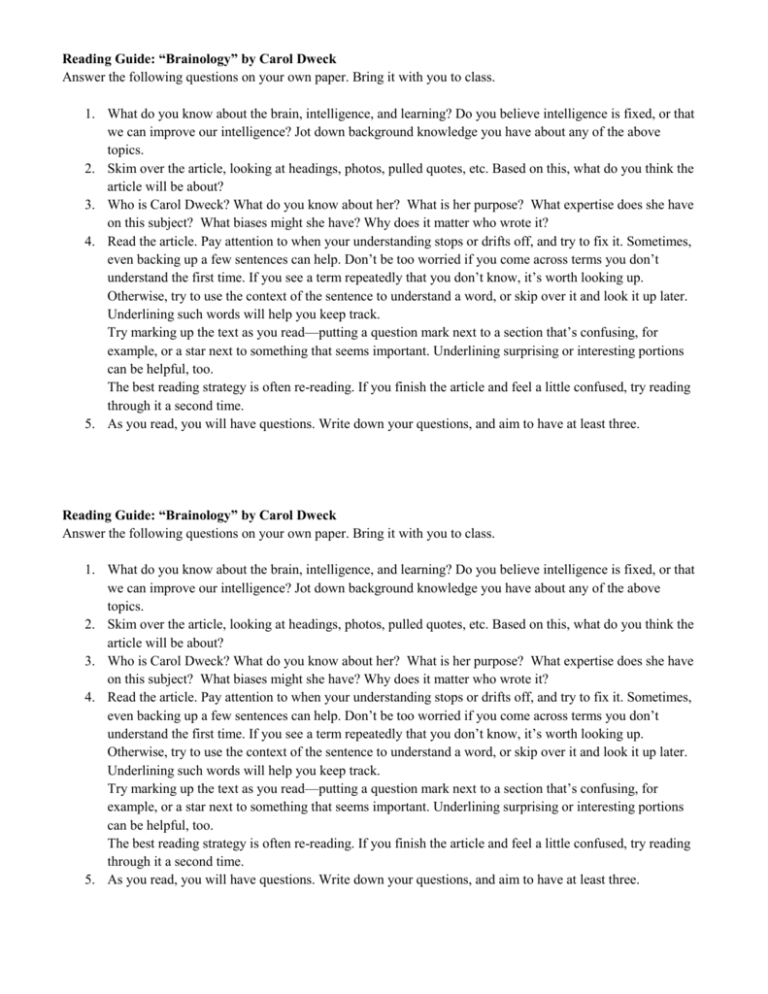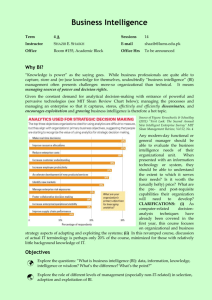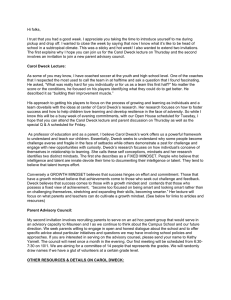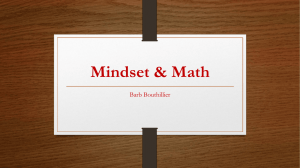Reading Guide: “Brainology” by Carol Dweck Answer the following
advertisement

Reading Guide: “Brainology” by Carol Dweck Answer the following questions on your own paper. Bring it with you to class. 1. What do you know about the brain, intelligence, and learning? Do you believe intelligence is fixed, or that we can improve our intelligence? Jot down background knowledge you have about any of the above topics. 2. Skim over the article, looking at headings, photos, pulled quotes, etc. Based on this, what do you think the article will be about? 3. Who is Carol Dweck? What do you know about her? What is her purpose? What expertise does she have on this subject? What biases might she have? Why does it matter who wrote it? 4. Read the article. Pay attention to when your understanding stops or drifts off, and try to fix it. Sometimes, even backing up a few sentences can help. Don’t be too worried if you come across terms you don’t understand the first time. If you see a term repeatedly that you don’t know, it’s worth looking up. Otherwise, try to use the context of the sentence to understand a word, or skip over it and look it up later. Underlining such words will help you keep track. Try marking up the text as you read—putting a question mark next to a section that’s confusing, for example, or a star next to something that seems important. Underlining surprising or interesting portions can be helpful, too. The best reading strategy is often re-reading. If you finish the article and feel a little confused, try reading through it a second time. 5. As you read, you will have questions. Write down your questions, and aim to have at least three. Reading Guide: “Brainology” by Carol Dweck Answer the following questions on your own paper. Bring it with you to class. 1. What do you know about the brain, intelligence, and learning? Do you believe intelligence is fixed, or that we can improve our intelligence? Jot down background knowledge you have about any of the above topics. 2. Skim over the article, looking at headings, photos, pulled quotes, etc. Based on this, what do you think the article will be about? 3. Who is Carol Dweck? What do you know about her? What is her purpose? What expertise does she have on this subject? What biases might she have? Why does it matter who wrote it? 4. Read the article. Pay attention to when your understanding stops or drifts off, and try to fix it. Sometimes, even backing up a few sentences can help. Don’t be too worried if you come across terms you don’t understand the first time. If you see a term repeatedly that you don’t know, it’s worth looking up. Otherwise, try to use the context of the sentence to understand a word, or skip over it and look it up later. Underlining such words will help you keep track. Try marking up the text as you read—putting a question mark next to a section that’s confusing, for example, or a star next to something that seems important. Underlining surprising or interesting portions can be helpful, too. The best reading strategy is often re-reading. If you finish the article and feel a little confused, try reading through it a second time. 5. As you read, you will have questions. Write down your questions, and aim to have at least three.











